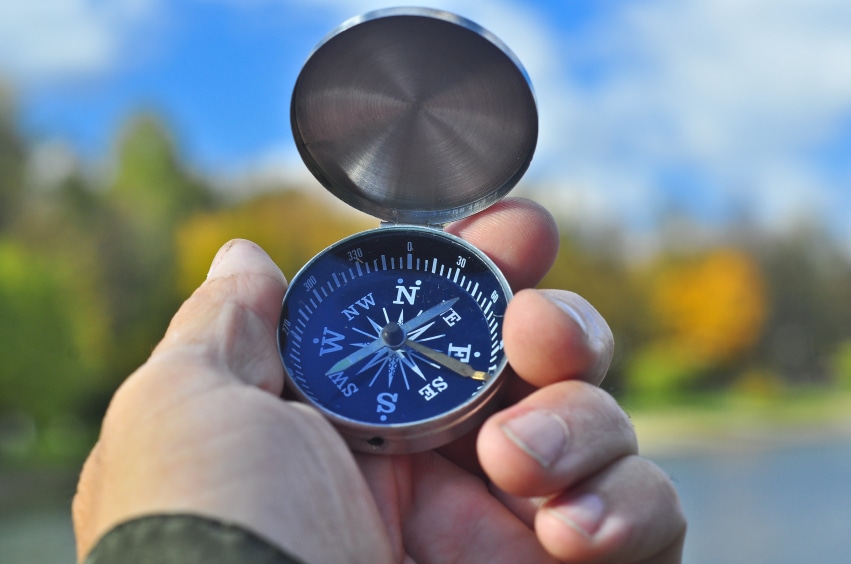Where Are You Really Going?

On March 20, 2013, a deserted Japanese fishing vessel was spotted 150 nautical miles south of Queen Charlotte Islands, adjacent to the main coast of British Columbia. It was rusty and battered but still intact. When the Canadian authorities searched the ship, they found there were no crewmen on the boat. The press immediately dubbed it “the ghost ship.”
The ghost ship was a lifeless floating reminder that a year before, a magnitude-9.0 earthquake hit Japan’s northeast coast. That caused a huge tsunami that sent 75-foot waves slamming into coastal areas. Nearly 20,000 people were killed. Amid the wreckage was the ghost ship that floated for one year without being discovered. For a period of time, satellites tracked a brown patch of water measuring 2,000×1,000 miles. They said it was “floating debris” from the tsunami, floating without direction, lost in the huge ocean. Eventually, the debris disappeared from view.
Our greatest problems don’t come from the debris left floating without direction—it can be hazardous but often not life threatening for most people. The real problems we face come when we find ourselves or others “drifting without direction.” We all know that there are four major directions; it’s easy to find North, South, East, and West. But even the best compass may not help us very much until we get our bearings.
That’s what the Moken people did in 2004. A monster tsunami hit their small island off the coast of Indonesia. The elders of the community warned everyone that if they ever saw the ocean withdraw rapidly from shore, they should drop everything and run to higher ground. At first the young people didn’t take the elders’ advice because they didn’t believe them. Fortunately, they quickly changed their minds and joined the population running to higher ground. When the tsunami hit, none of the Moken people were lost. That day, Moken teen-agers found themselves. They discovered exactly where they were, and discovered a new direction—up!
Often, people drift aimlessly because they are beginning with no end in mind. They really don’t know what they want, or where they want to end up. They have no vision and haven’t taken time to draw from their imaginations important pictures of what they want their future to look like.
It’s valuable to remember that all things are created twice. The first creation occurs when architects create blueprints or when military leaders go into the “general’s tent” and plan their campaigns. You see it when coaches create a game plan before the game is played. Steve Jobs spent thousands of hours in “the general’s tent” creating Apple. Apple was built from his mind. His practice was one of visualizing what he wanted and then creating what he saw.
You can’t have a second creation without a first creation. The first creation is the plan, and the second creation is the implementation of that plan. The plans we make in order to get to where we are going are invaluable. Many individuals spend lifetimes of work and investment to climb the ladder of success, only to find it leaning against the wrong wall. It never was what they really wanted.
Melaleuca is a classic model of beginning with the end in mind. It’s impossible to build a great company without a great mission. While other companies have long, tiring mission statements no one can repeat or understand, Melaleuca’s mission statement is succinct and powerful: “Enhancing the Lives of Those We Touch by Helping People Reach Their Goals.”
For nearly 30 years, that mission statement has instilled vision and purpose in the hearts of each member of the Melaleuca family. Melaleuca has changed thousands of lives and continues to grow because it has never drifted aimlessly.
It began and has always operated with the end in mind.

What a wonderful reminder that if we keep our mission statement in mind, Enhancing the lives of those we touch and help,them reach their goals, not only will we help others reach their goals, we will help ourselves in the process.
A wise man once said ” their is more happiness in giving than in receiving”. .. What better way to pay it forward and reach out than by sharing better ,safer, life changing products, that truly can enhance people’s lives. Thank you for the reminder.
I have had somewhat of a checkered business career and learned the “Mission Statement” of many different Companies. During all that time I may have been the only one of a few Employees who could quote the Company’s Mission Statement. I felt that it was extremely important for every employee to know and for every active Marketing Employee to be able to preface their “Elevator Speech” with a quick pitch of a SENSIBLE Mission Statement. Unfortuneatly ….they were too long and mostly ineffective. Now, after 66 years….I can only quote ONE.. Company Mission Statement…….MELALEUCA!
We congratulate you, Frank on your Marketing Wisdom and insight in choosing a One-Liner that embraces the real meaning of GIVING! THANK YOU SO MUCH!!! Gordon.